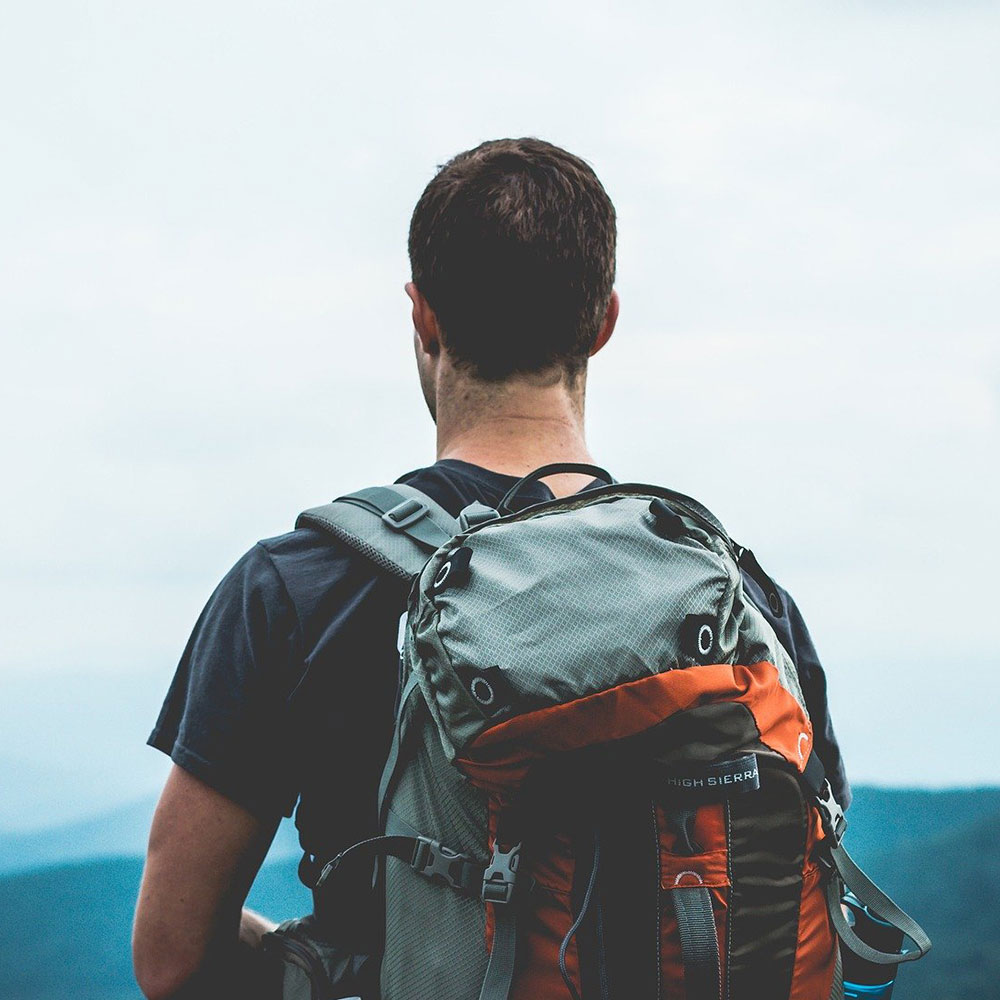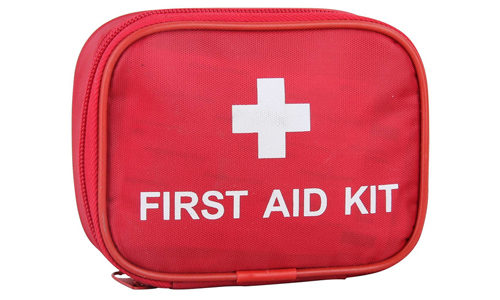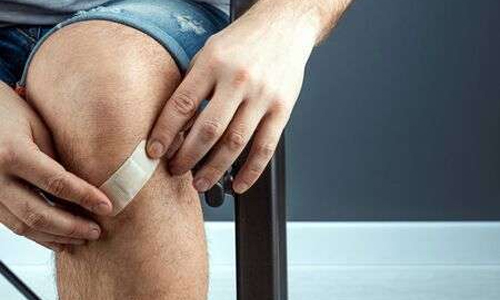A Quick Read on Hiker’s First Aid Essentials to Travel Safely
Author

Javier Olivo is a blogger and a writer by heart. In the past, Javier worked as a woodcarver in a furniture store in his hometown. Being exposed to the outdoors, he often likes to give advice to people who prefer trekking in the woods. During his free time, Javier loves going to the gym and playing football.
Going for an outdoor adventure needs proper planning and packing, out of which, a first-aid kid is one of the most important essentials you must not forget. If you’re new to this kind of packing or don’t know how to start, ask yourself a few questions: What if you don’t carry the first-aid kit? Will there be any consequences for that? Is there anything you’re missing or forgot to add?
People generally carry redundant items because of their habits but forget to analyse if it is really necessary. If you’re moving towards the backcountry, always keep the phrase “Prevention is better than cure” in mind. You can always start by making a list that should include emer gency items and other medications. Make a separate kit or box as per your convenience for all the essentials. You can even carry some additional supplies if hiking in a group.
gency items and other medications. Make a separate kit or box as per your convenience for all the essentials. You can even carry some additional supplies if hiking in a group.
Check out this list of items and see what you can always carry on a hike.
Medications
Keeping vital pills won’t weigh much and you can easily add them in a small bag. Ensure you’re having a stock of the pills (prescribed and non-prescribed), so you have everything during the emergency.
PRO TIP: Add some grains of rice in your bag of pills, so they can absorb any moisture.
Advil that can help you provide relief from the common headache, pain, and even be considered to lessen inflammation and fever.
Benadryl that can be used as sleeping pills as well. It is generally recommended to get relief from allergy or initial anaphylaxis.
Asprin is always an excellent pick for the first-aid kit. What if someone from the group suffers a heart attack? This pill can help lessen the chances of death.
For Wound Care
If you ever check any hiker’s first aid kit, the maximum area would be filled with the stuff for treating wounds. These  essentials eliminate the risk of infections, stop bleeding, and help in healing faster.
essentials eliminate the risk of infections, stop bleeding, and help in healing faster.
Important items for treating any wound should always be present in the kid, especially if you’re travelling in the pristine area. Backcountry travelling gives you the privilege to be treated in a cleaner area. Also, ensure you follow up on your injuries once you reach home and get proper treatment if the signs of infection are seen. You need to carry:
Triple Antibiotic Ointment that should be applied when the wound stops bleeding completely. Clean using water and put some cream on the injury to avoid any infections.
3-inch Fabric Band-Aids are kept for the protection from minor scrapes or cuts. Why fabric band-aids? Because they are breathable and stretchable. Also, they don’t get gross with time.
Alcohol Pads are a great pick to clean the skin around the injury before you start the dressing.
Nexcare Steri-Strips are the thin and long tape pieces that are used across any wide cut, so they can pull the skin together. They are just like the stitches one can apply manually for keeping the wound closed.
Irrigation Syringe, a 5ml syringe that can be a great help to push clean water into deep cuts that can easily flush out any harmful thing.
Spenco 2nd Skin Blister Pads are the small pads that can easily stick to blisters and small burns, protect them and let them heal quickly without any discomfort.
So, having these important items in the first-aid kit while hiking can help you deal with any mishap easily, especially if you’re planning to spend a lot of time in the wilderness.
Author

Javier Olivo is a blogger and a writer by heart. In the past, Javier worked as a woodcarver in a furniture store in his hometown. Being exposed to the outdoors, he often likes to give advice to people who prefer trekking in the woods. During his free time, Javier loves going to the gym and playing football.
Categories
- Sport (28)
- Product Reviews (3)
- Team Outdoor Look (7)
- Mike Wild (2)
- Mike Payton (2)
- Suse Hammond-Pears (3)
- Snowboarding (12)
- Latest Offers (105)
- Shop Talk (1)
- Competitions (7)
- Walking (413)
- Lifestyle Fashion (8)
- Travel (86)
- Kit Guides (176)
- Workwear Clothing (6)
- Safety Workwear (4)
- Health/Fitness (289)
- Skiing (91)
- Great Outdoors (1316)
- Cycling (92)
- January 2025
- December 2024
- November 2024
- October 2024
- September 2024
- August 2024
- July 2024
- June 2024
- May 2024
- April 2024
- March 2024
- February 2024
- January 2024
- December 2023
- November 2023
- October 2023
- September 2023
- August 2023
- July 2023
- June 2023
- May 2023
- April 2023
- March 2023
- February 2023
- January 2023
- December 2022
- November 2022
- October 2022
- September 2022
- August 2022
- July 2022
- June 2022
- May 2022
- April 2022
- March 2022
- February 2022
- January 2022
- December 2021
- November 2021
- October 2021
- September 2021
- August 2021
- July 2021
- June 2021
- May 2021
- April 2021
- March 2021
- February 2021
- January 2021
- December 2020
- November 2020
- October 2020
- September 2020
- August 2020
- July 2020
- June 2020
- May 2020
- April 2020
- March 2020
- February 2020
- January 2020
- December 2019
- November 2019
- October 2019
- September 2019
- August 2019
- July 2019
- June 2019
- May 2019
- April 2019
- March 2019
- February 2019
- January 2019
- December 2018
- November 2018
- October 2018
- September 2018
- August 2018
- July 2018
- June 2018
- May 2018
- April 2018
- March 2018
- February 2018
- January 2018
- December 2017
- November 2017
- October 2017
- September 2017
- August 2017
- July 2017
- June 2017
- May 2017
- April 2017
- March 2017
- February 2017
- January 2017
- December 2016
- November 2016
- October 2016
- September 2016
- August 2016
- July 2016
- June 2016
- May 2016
- April 2016
- March 2016
- February 2016
- January 2016
- December 2015
- November 2015
- October 2015
- September 2015
- August 2015
- July 2015
- June 2015
- May 2015
- April 2015
- March 2015
- February 2015
- January 2015
- December 2014
- November 2014
- October 2014
- September 2014
- August 2014
- July 2014
- June 2014
- May 2014
- April 2014
- March 2014
- February 2014
- January 2014
- December 2013
- November 2013
- October 2013
- September 2013
- August 2013
- July 2013
- June 2013
- May 2013
- April 2013
- March 2013
- February 2013
- January 2013
- December 2012
- November 2012
- October 2012
- September 2012
- August 2012
- July 2012
- June 2012
- May 2012
- April 2012
- March 2012
- February 2012
- January 2012
- December 2011
- November 2011
- October 2011
- September 2011
- August 2011
- May 2010
- April 2010
- March 2010
- February 2010
- January 2010
- November 2009
- October 2009
- September 2009
Submit a Comment